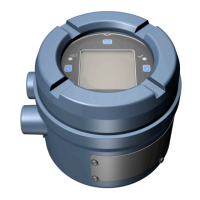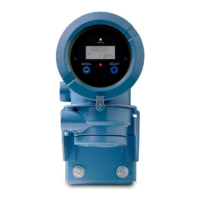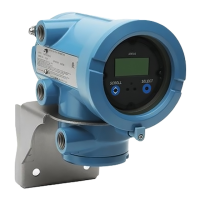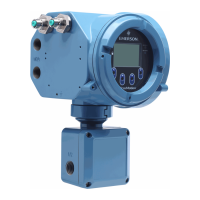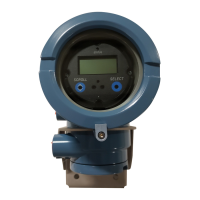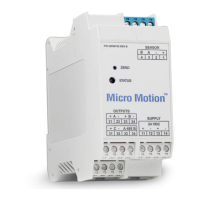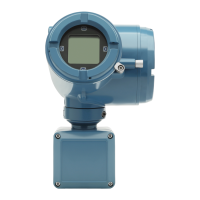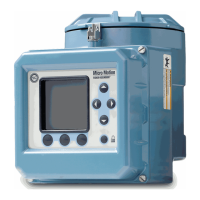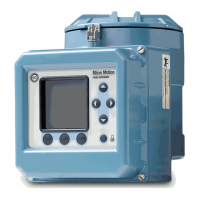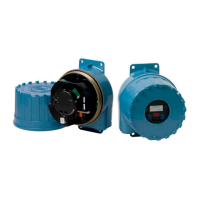74 Micro Motion Series 1000 and Series 2000 Transmitters
Optional Configuration
8.8.1 Damping and volume measurement
When configuring damping values, note the following:
• Liquid volume flow is derived from mass and density measurements; therefore, any damping
applied to mass flow and density will affect liquid volume measurement.
• Gas standard volume flow is derived from mass flow measurement, but not from density
measurement. Therefore, only damping applied to mass flow will affect gas standard volume
measurement.
Be sure to set damping values accordingly.
8.8.2 Interaction with the added damping parameter
Both the primary mA output and the secondary mA output (if it is available on your transmitter) have
a damping parameter (added damping). If damping is configured for flow, density, or temperature, the
same process variable is assigned to an mA output, and added damping is also configured for the mA
output, the effect of damping the process variable is calculated first, and the added damping
calculation is applied to the result of that calculation.
8.8.3 Interaction with the update rate
Flow and density damping values depend on the configured Update Rate (see Section 8.9). If you
change the update rate, the damping values are automatically adjusted. Damping rates for Special are
20% of Normal damping rates. See Table 8-5.
Note: The specific process variable selected for the 100 Hz update rate is not relevant; all damping
values are adjusted as described.
8.9 Configuring the update rate
The update rate is the rate at which the transmitter polls the sensor for process data.
Update Rate affects the transmitter’s response time to changes in the process.
There are two settings for Update Rate:
Normal and Special.
• When
Normal is configured, most process variables are polled at the rate of
20 times per second (20 Hz).
• When
Special is configured, a single, user-specified process variable is
polled 100 times per second (100 Hz). Polling for some process variables
and diagnostic/calibration data is dropped (see Section 8.9.1), and the
remaining process variables are polled a minimum of 6 times per second
(6.25 Hz).
If you set the update rate to
Special, you must also specify which process variable will be polled at
100 Hz. Different 100 Hz variables are available, depending on which special applications are
installed on your transmitter.
Note: For transmitters with transmitter software rev5.0 running the enhanced density application, the
Special update rate is not available.
Note: Most users should select the Normal update rate. Use the Special update rate only if required
by your application. See Section 8.9.1.
Note: If you change the update rate, the setting for damping is automatically adjusted. See
Section 8.8.3.
• Model 1500 AN
• Model 1700 AN
• Model 1700 IS
• Model 2500 CIO
• Model 2700 AN
• Model 2700 IS
• Model 2700 CIO

